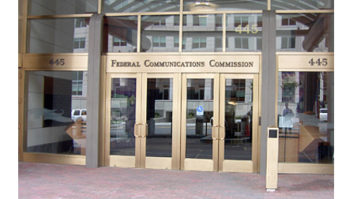Everyone�s done it at some point or another. A big Thanksgiving meal, too many nachos watching the big game, and relief is found by loosening the belt a notch or two. On Feb. 23, 2017, the Federal Communications Commission adopted rules to slightly adjust the waistline of FM translators used to provide fill in coverage for AM stations.

Previously, the FCC adopted rules to permit FM translators to rebroadcast AM stations. The FCC�s current rules require the FM translator to be located at a transmitter site that is within the lesser of (i) the 2 mV/m daytime contour of the AM station, or (ii) a 25-mile radius centered on the AM station�s transmitter sites. Subsequently, the FCC adopted procedures in 2015 to open four separate filing windows to permit AM stations to obtain authorizations for fill-in service by FM translators.
The first two windows permitted FM translators to make �major� changes to their facilities, change channels and move up to 250 miles to serve as a fill-in service for an AM station. The next two filing windows will permit AM stations to file for new FM translator facilities, with the Class C and D AM stations getting the first opportunity, and then a general window for all AM stations that had not yet submitted an application. The two remaining windows were intended to occur in 2017.
One proposal for which the FCC sought additional comments in 2015 was whether it should relax the siting restrictions to permit FM translators to operate from transmitter sites further away from the AM station�s transmitter site.
One possibility was that the FCC would switch to a �greater than� standard when looking at the AM station�s 2 mV/m contour or 25-mile radius, so long as the 60 dBu contour of the FM translator did not extend beyond a 40-mile radius. In response, some commenters had urged the commission instead to expand the 25-mile radius to 40 miles, or abandon the radius limitation all-together.
In the end, the FCC adopted rules to permit FM translators serving as a fill-in service for AM stations may be sited so that their 60 dBu contour must be contained within the greater of (i) the 2 mV/m contour of the AM station, or (ii) a 25-mile radius centered on the AM station�s transmitter site. The FCC expressed concern that any further expansion of the fill-in FM translator siting restriction would lead to FM translators extending their service to areas outside the AM station�s core service area.
PUBLIC FILE CHANGES
In other actions, the FCC eliminated the rule requiring commercial broadcasters to maintain public correspondence in a public inspection file maintained at the station�s main studio. As discussed last March, the FCC adopted rules for radio stations to transition their public inspection files to an FCC-maintained online filing system. The transition is partially complete, with commercial radio stations in the top 50 markets with five or more full-time employees moving by last June,while all stations must complete the transition by March 1, 2018.
One category of documents was not included in the first wave, though. The FCC declined in 2016 to require that radio stations move correspondence from the public to the online public file system due to privacy concerns.
In the very first action under the regime of Chairman Ajit Pai, the FCC adopted a report and order eliminating that requirement. Instead, while the public may continue to call, write and send emails to broadcasters, the FCC will no longer require that broadcasters maintain these records in their public inspection file.
By eliminating the requirement, commercial broadcasters can complete the transition of their public file to the online filing system and will no longer be required to maintain a local public file at their station(s)� main studios.
PILOT PROJECT
One final note: Chairman Pai announced a pilot project in which he plans to release advance copies of the documents to be voted on at the next open meeting. The report and order modifying the FM translator rule discussed above was the first order released under this new process. The intended goal is to permit the public to �understand the nature and scope of issues under consideration.�
While it will be helpful for the public to have an opportunity to see the draft documents, one concern worth noting is that the public will need to be more active in monitoring active proceedings to watch for last-minute lobbying efforts by interested parties with eyes and ears in Washington. In the past, these lobbying efforts were general in nature because the drafts were not public. With the drafts now being released several weeks before the FCC votes, lobbying efforts will be significantly more targeted, as interested parties will have a target to shoot at.
FCC DEADLINES:
April 1, 2017 � Annual EEO Public File Reports are due for stations located in Delaware, Indiana, Kentucky, Pennsylvania, Tennessee and Texas with five or more full-time employees.
April 3, 2017 � Broadcast Mid-Term Report (FCC Form 297) due for stations located in Texas with 11 or more full-time employees.
April 10, 2017 � Issues/Programs Lists for First Quarter of 2017 must be placed in/uploaded to stations� public inspection file.












